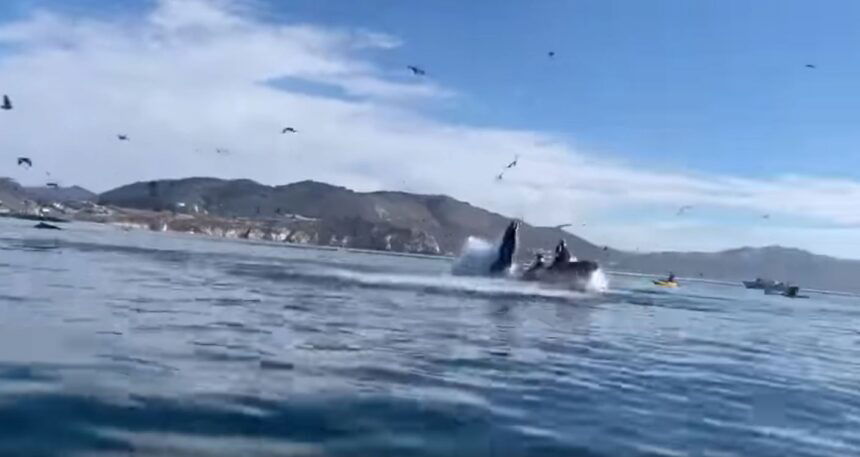Kayakers capsize after almost being ‘eaten’ by humpback whale in Avila Beach

AVILA BEACH, Calif. - A couple of kayakers are happy to be alive this week after having a close call with a humpback whale in the waters off Avila Beach.
The fishy situation was captured by multiple other whale-watchers in the area.
Video shared by bystander Mandy Boyle shows the whale surface with its mouth wide open underneath the kayak. The boat is then toppled over into the water as the whale descends and closes its mouth.
Fortunately, the two kayakers were unharmed and able to return to the surface a few seconds after being dunked.
Boyle said there were a lot of fish congregating in the water underneath the kayakers. It is likely the whale scooped them up by accident while trying to get a mouthful of food.
Fellow bystander Kellie Balentine also shared closeup footage of the hungry whale on Facebook.
One of the victims, Julie McSorley of San Luis Obispo, described the experience as her own personal "Jonah moment".
Our affiliates at KMPH Fox 26 News identified the second kayaker as McSorely's friend, Liz Cottriel.
The Port San Luis Harbor District released several guidelines for visitors who come to Central Coast beaches while the whales are out and about this year:
- When possible, do your best to maintain at least 100 yards of distance between you and the whales – think the size of a football field. Do not attempt to feed, touch or interact with any marine mammals
- Do not chase, encircle, or leapfrog animals, and avoid approaching marine mammals when another watercraft is near. Multiple vessels are more likely to disturb marine mammals.
- If there are already a lot of other people on the water observing whales, consider coming back later or limiting your time watching the whales to 30 minutes or less.
- When you do encounter a whale, slow down and alter course so that you are parallel to the whale’s course. Never approach head-on!
- Be wary of breaching, flipper slapping and feeding. While these are some of the largest creatures in the ocean, they eat some of the smallest creatures, which include small fish and krill. Don’t paddle through large schools of fish (usually indicated by lots of seabirds in the immediate area) because this is where whales will be lunging out of the water to catch fish in their giant mouths.
- Stay clear of light green bubble patches in the water. These are sub-surface bubbles before whales rise up to feed at the surface.
- If you see a mother whale and her calf (i.e. a big whale with a smaller whale), do not put yourself between them.
Remember, it is illegal to cause a marine mammal to alter their behaviors in any way. These big annual visitors are always a pleasure to see, but please be respectful of them so we can continue to enjoy them for years to come, and also do what we can to limit the chances of an observer getting unintentionally injured by one of these gentle giants or a whale being unintentionally injured by an observer.
